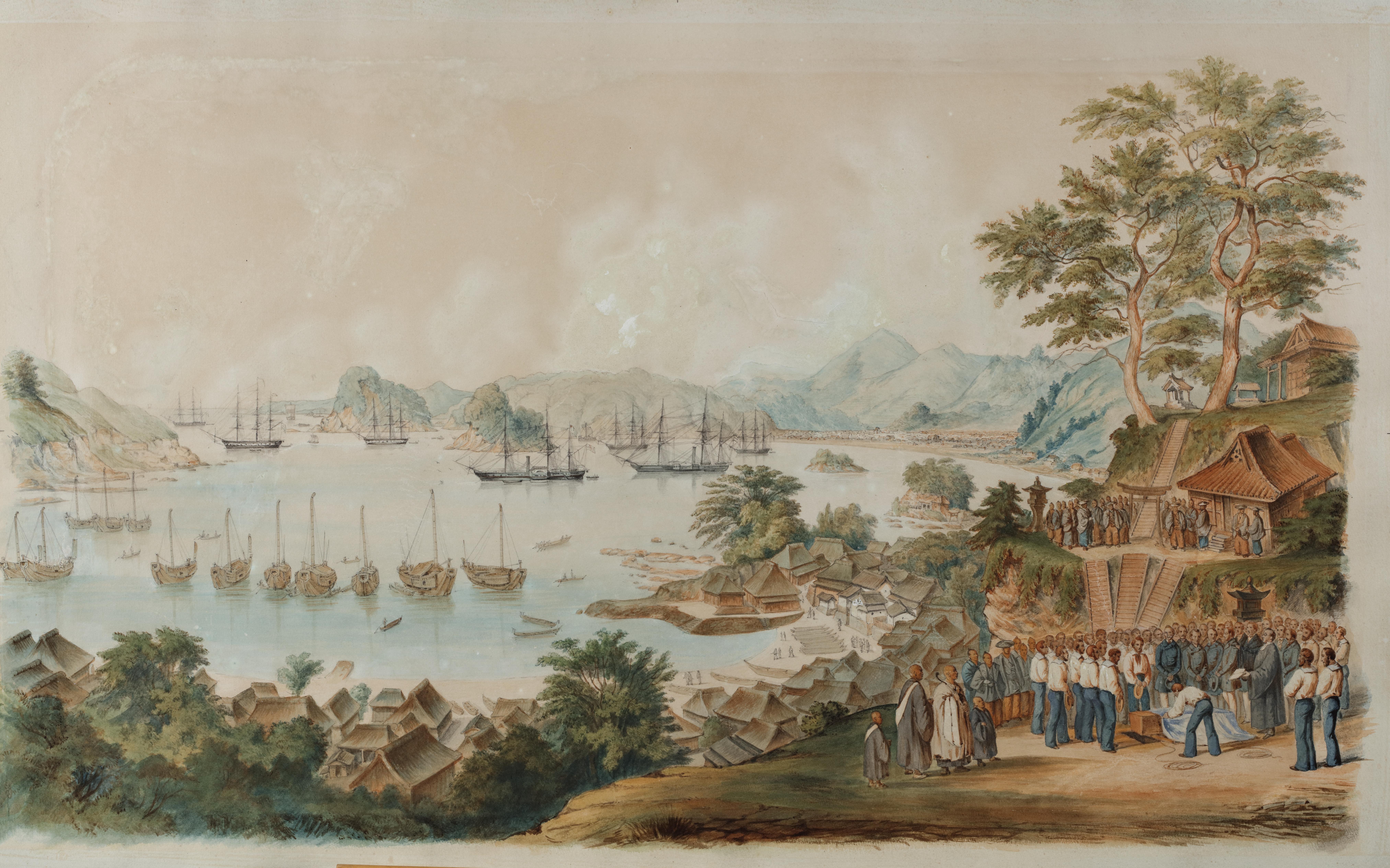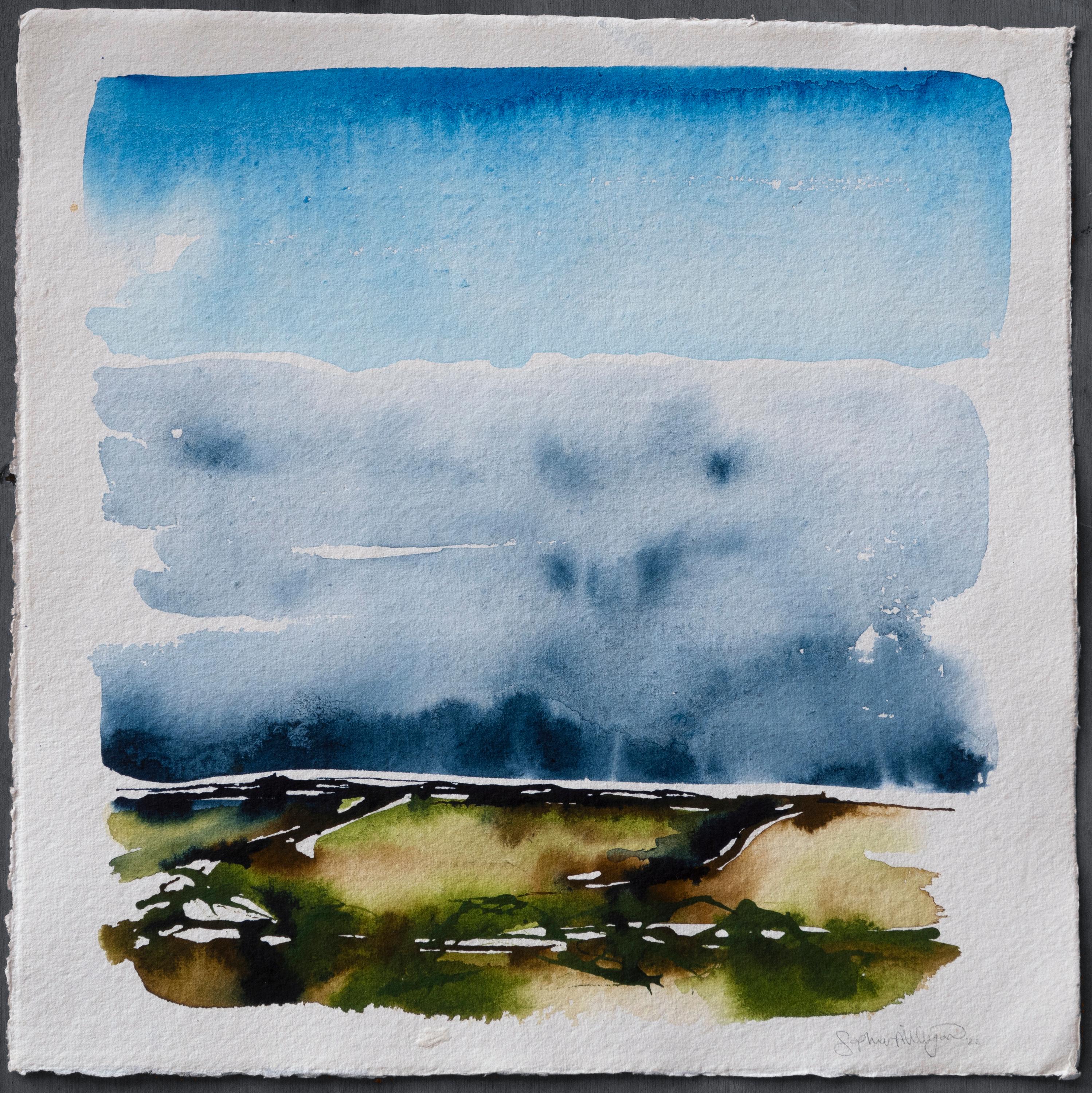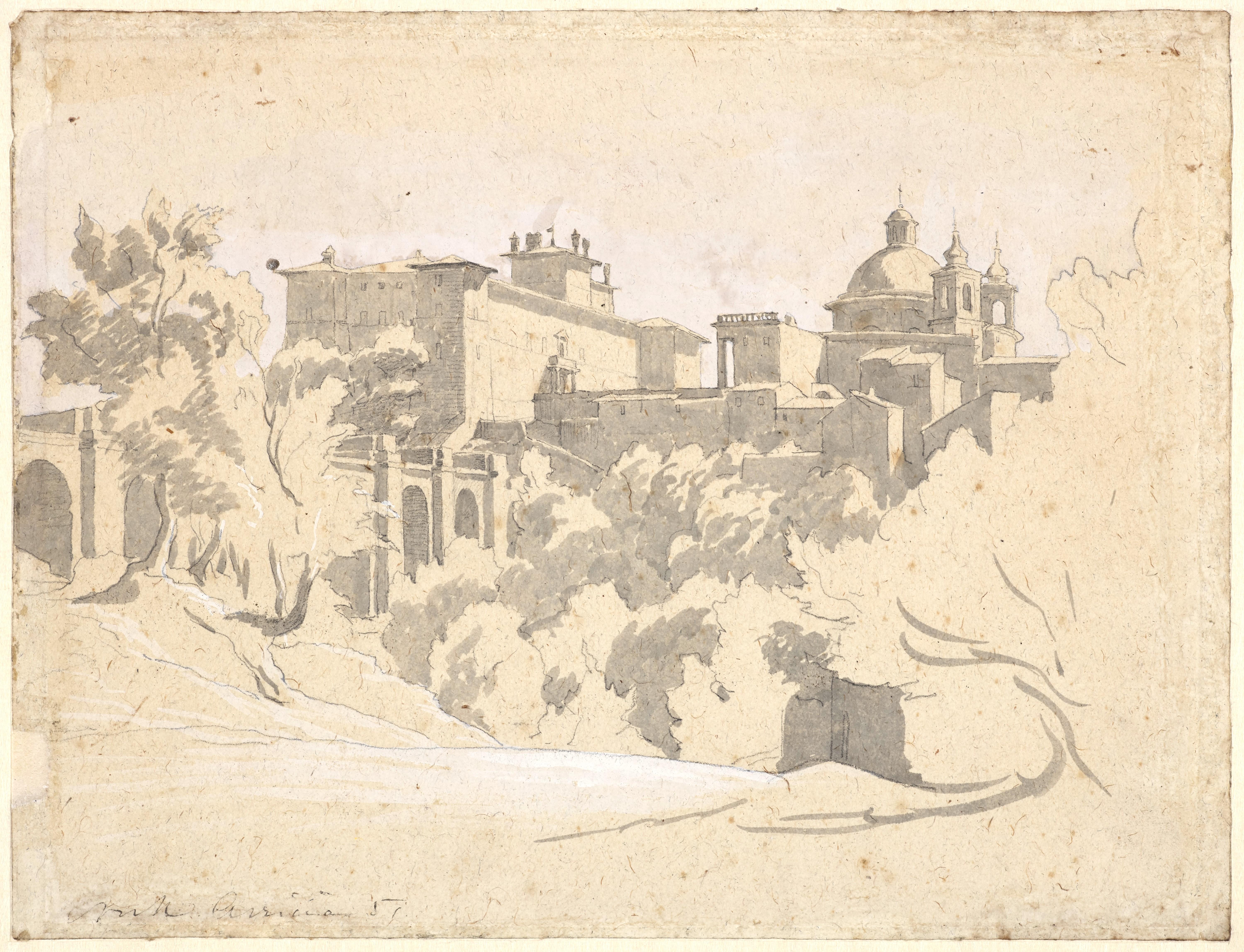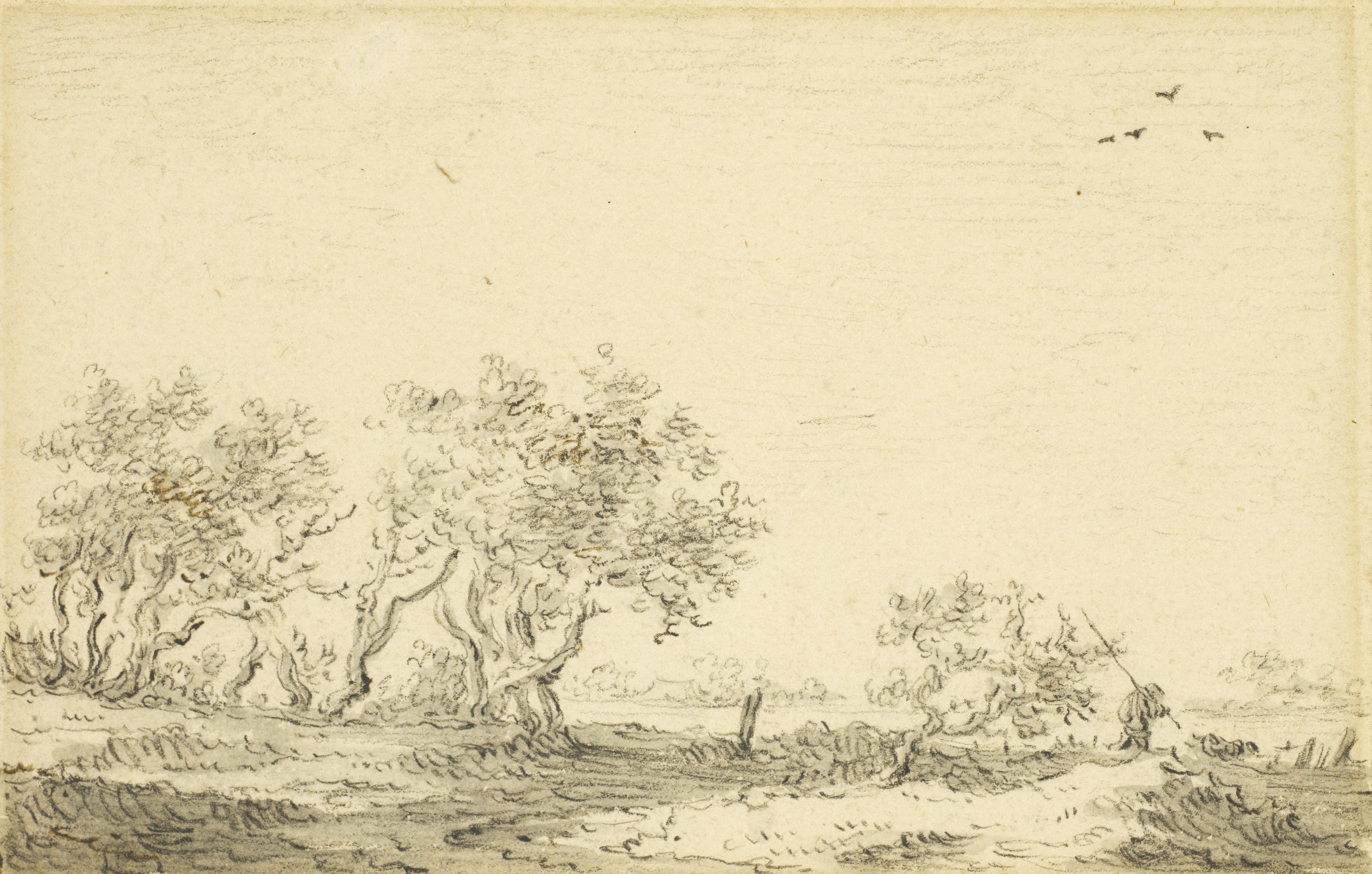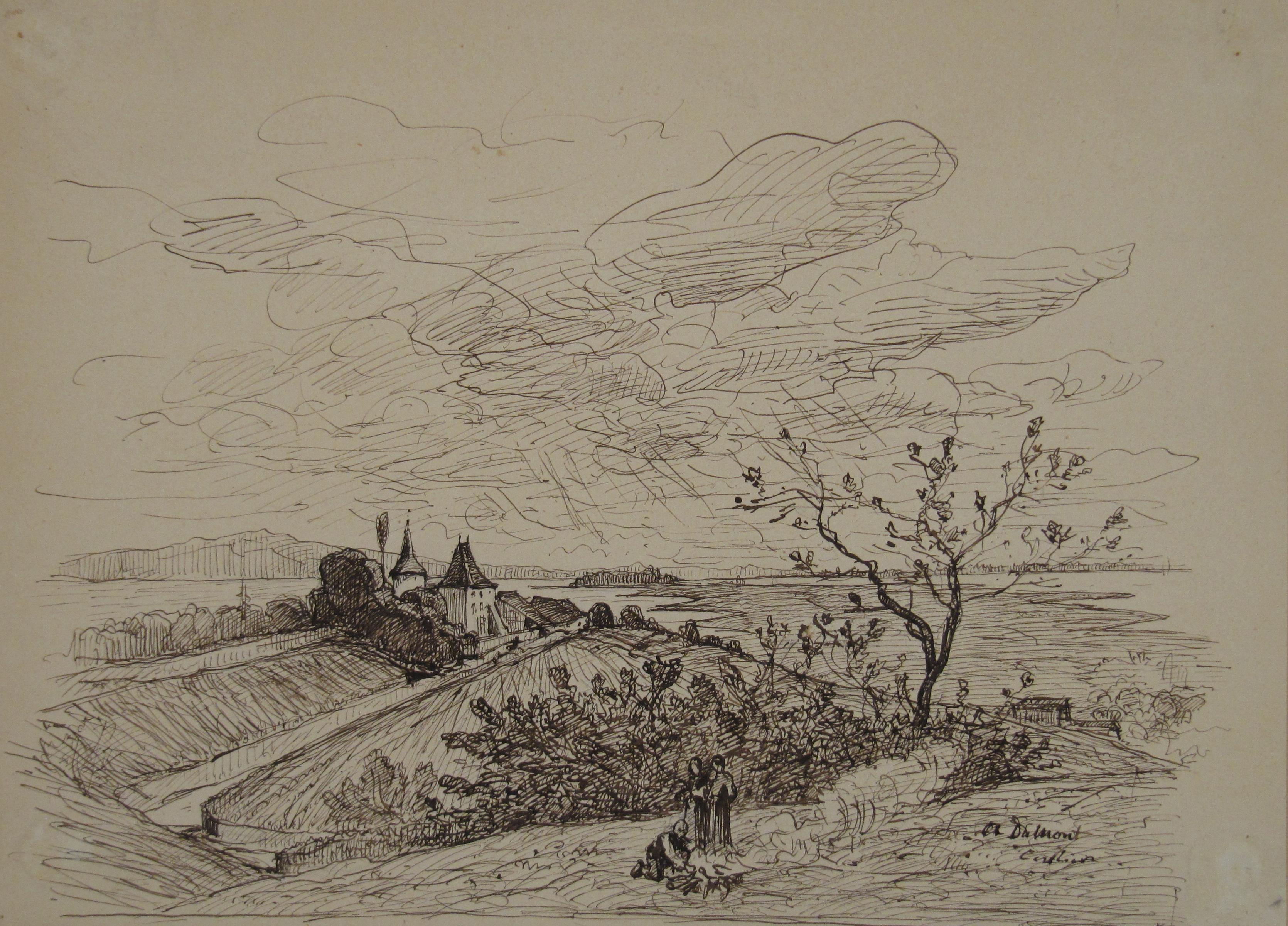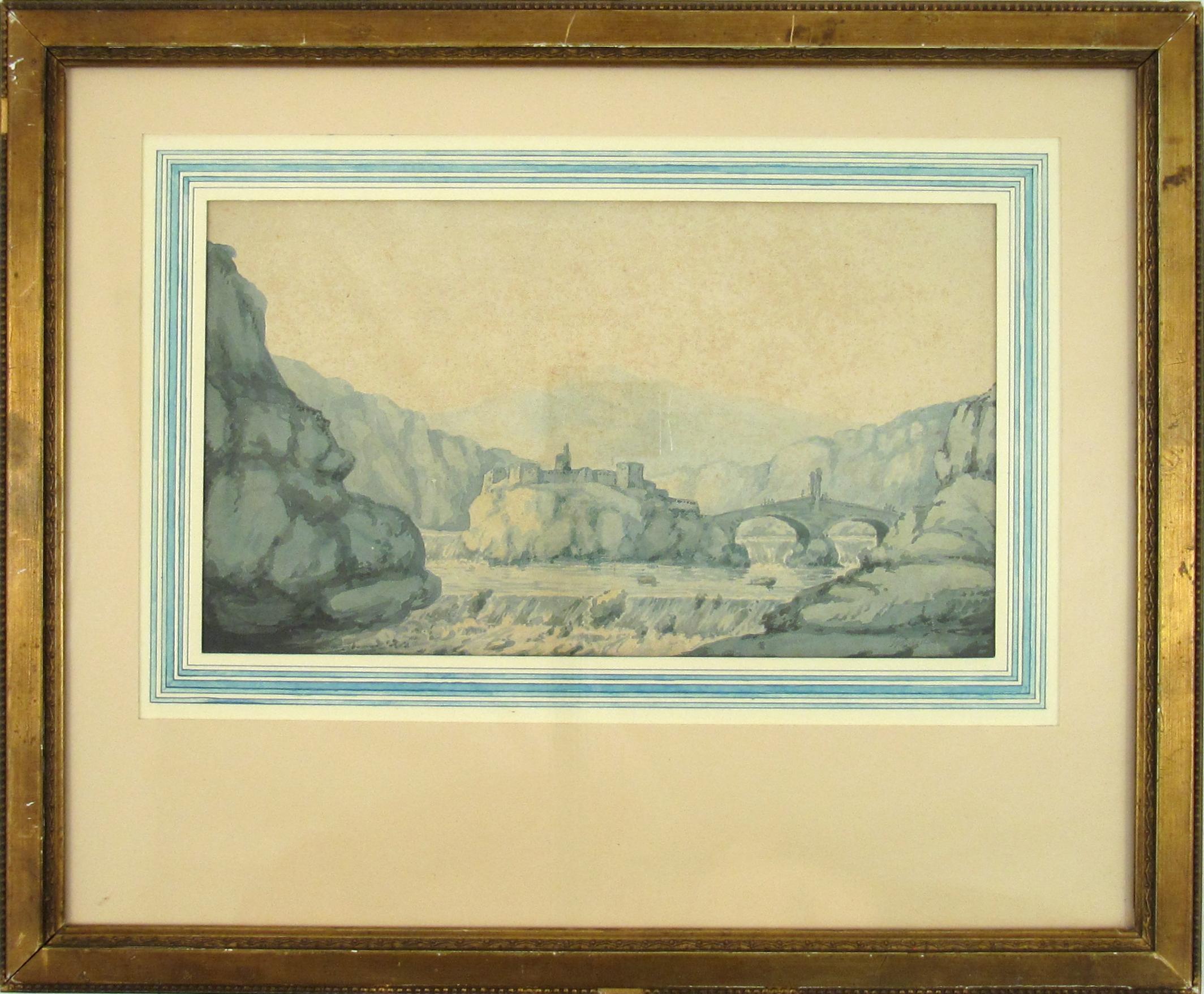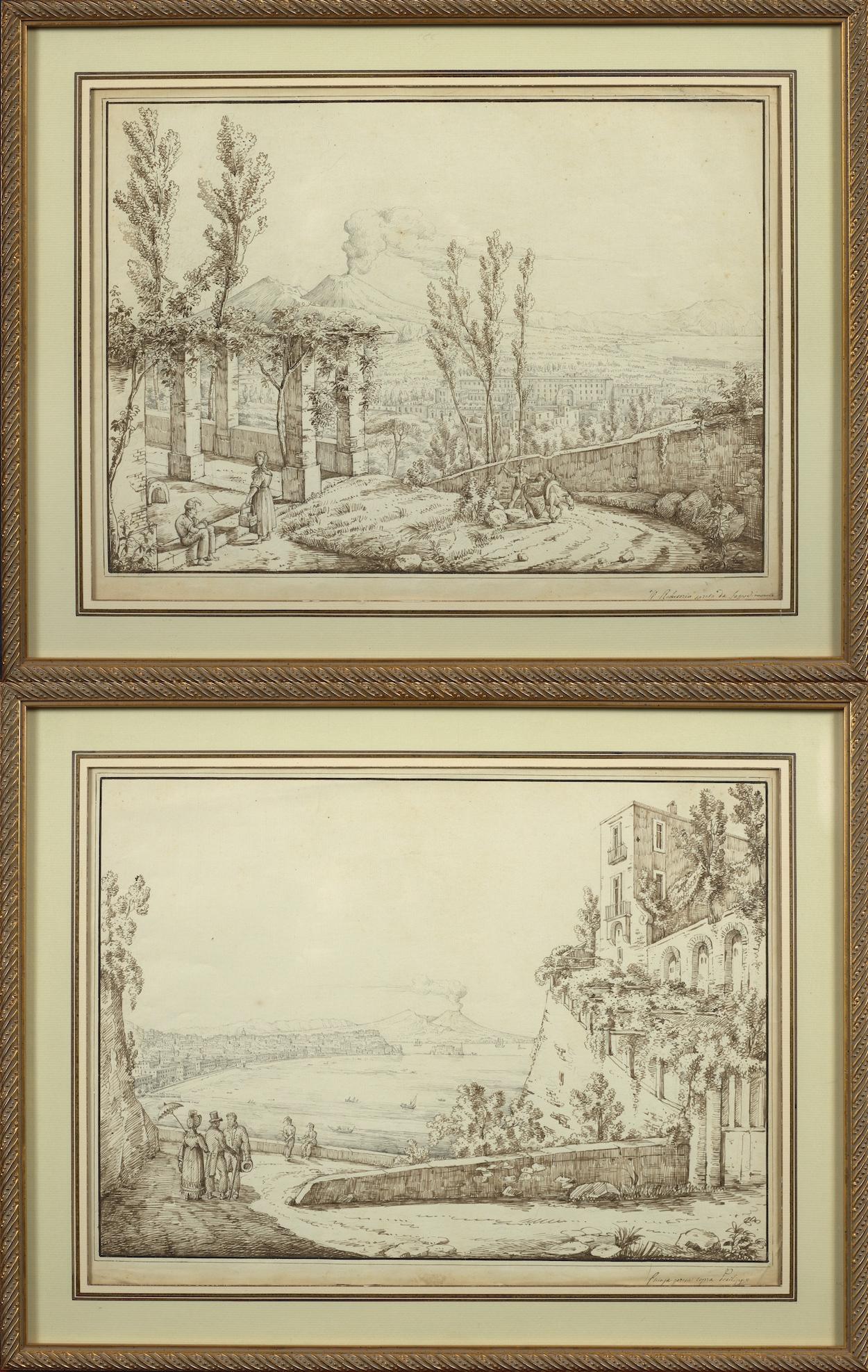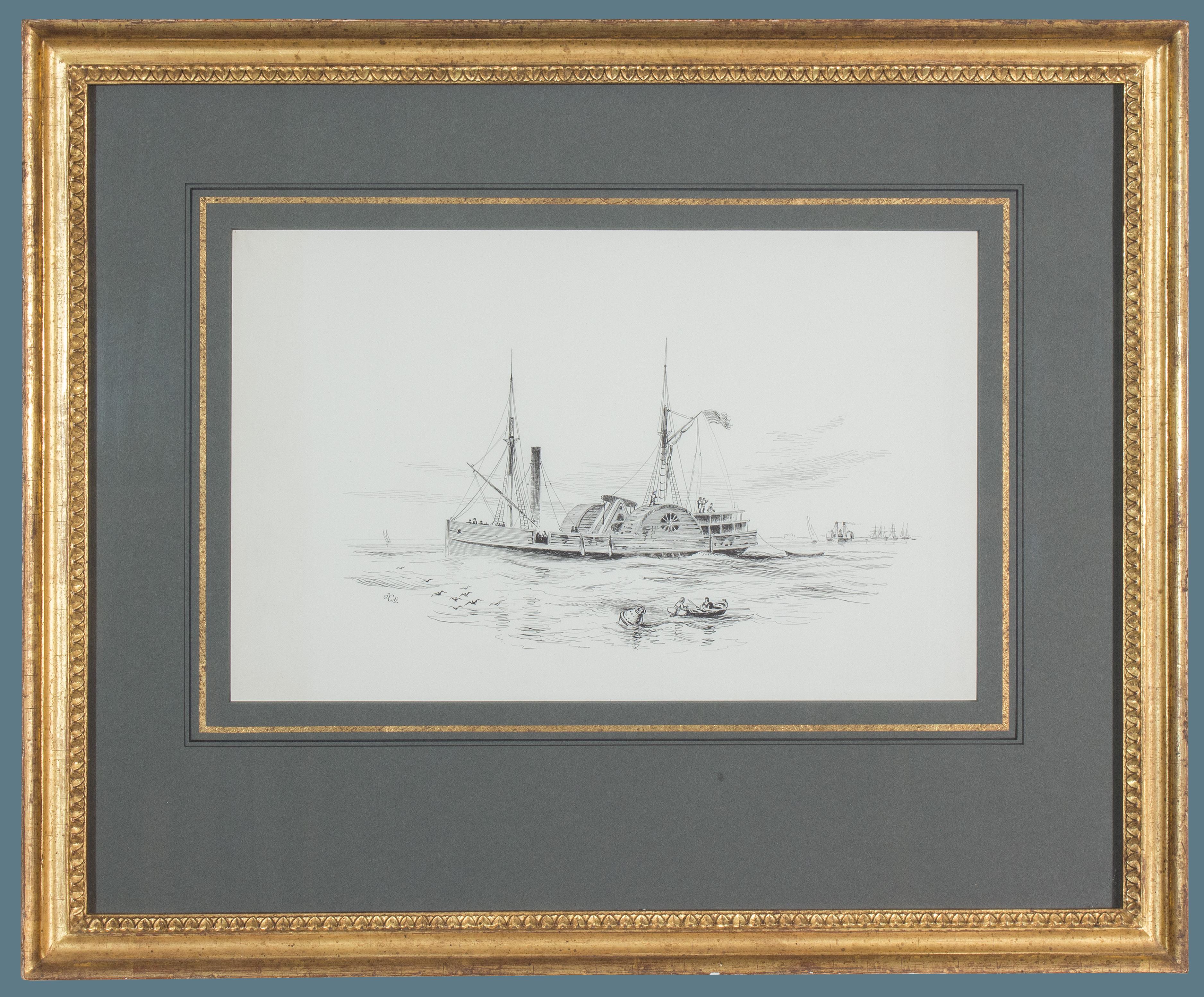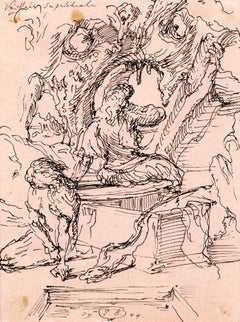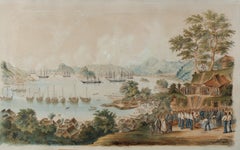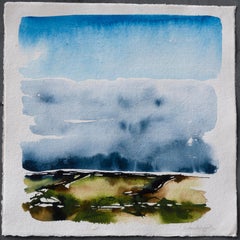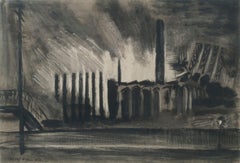
untitled (Chicago Street Scene)
Want more images or videos?
Request additional images or videos from the seller
1 of 6
Adolf Arthur Dehnuntitled (Chicago Street Scene)1930
1930
About the Item
- Creator:Adolf Arthur Dehn (1895-1968, American)
- Creation Year:1930
- Dimensions:Height: 22.63 in (57.49 cm)Width: 29.5 in (74.93 cm)Depth: 1 in (2.54 cm)
- Medium:
- Period:
- Condition:Very Good original condition. Minor areas of imperfection due to age and medium. Non-obtrusive. Framed archivally.
- Gallery Location:Fairlawn, OH
- Reference Number:Seller: AD00401D1stDibs: LU1404565631
Adolf Arthur Dehn
Adolf Dehn, printmaker, watercolorist, and illustrator, was born in Waterville, Minnesota, in 1895. In 1914 he began studying at the Minneapolis School of Art, and in 1917, the year his first published drawing appeared in the progressive magazine, The Masses, he received a scholarship to study at the Art Students League in New York. There he worked with Kenneth Hayes Miller and was introduced to lithography by Boardman Robinson. While in New York, Dehn threw himself into liberal politics. Declaring himself a conscientious objector in 1918, he was forced to spend four months in a Spartanburg, South Carolina, boot camp for refusing to serve in the armed forces and eight months as a volunteer instructor teaching painting and drawing at a hospital for war victims in Asheville, North Carolina. Dehn spent the years 1920 to 1929 in art-related travel in Europe, primarily in Vienna and in Paris, where he made lithographs at the Atelier Desjobert. Throughout this time, Dehn exhibited his work at the Weyhe Gallery in New York and contributed drawings both to magazines abroad and to the radical journal The Masses. Upon his return to New York in 1929, he became a leading figure in printmaking circles, exhibiting his prints to considerable critical acclaim. In 1937, Dehn had worked exclusively in black and white until 1937—halfway through his career—when he began to work in watercolor. During his summer visits to Minnesota, he created a large body of regional watercolors depicting the lakes and farms of his home state. Lithography and watercolor remained his two primary media, and his subjects ranged from social satire to naturalistic landscapes. He authored the treatise, Water Color Painting, in 1945 and two other instructional books on lithography and watercolor in 1950 and 1955. From 1938 to 1939 he taught at Stephens College in Columbia, Missouri, and during the summers of 1940-1942 he taught at the Colorado Springs Fine Arts Center. In 1939 and 1951 Dehn received Guggenheim Fellowships, and 1961 he was elected Full Academician to the National Academy of Design. Dehn exhibited throughout his career, and his works are in the permanent collections of the Metropolitan Museum of Art, the Museum of Modern Art, the Art Institute of Chicago, the Museum of Fine Arts in Boston, and the British Museum, among others. Adolf Dehn died in New York in 1968.
About the Seller
5.0
Recognized Seller
These prestigious sellers are industry leaders and represent the highest echelon for item quality and design.
Platinum Seller
These expertly vetted sellers are 1stDibs' most experienced sellers and are rated highest by our customers.
Established in 1978
1stDibs seller since 2013
711 sales on 1stDibs
Typical response time: 1 hour
Associations
International Fine Print Dealers Association
More From This SellerView All
- Untitled (Hot Air Baloon Ascent and Spectators)By Joseph O'SickeyLocated in Fairlawn, OHUntitled (Hot Air Balloon Ascent and Spectators) Sepia wash on wove paper, 1985 Signed and dated in ink lower right corner From the artist's 1985 sketchbook Probably a view of Cape C...Category
1980s American Modern Landscape Drawings and Watercolors
MaterialsInk
- MinneapolisBy Adolf DehnLocated in Fairlawn, OHNote: Dehn was born in Minnesota. He attended the Minneapolis Institute of Art. This work is a view of the Stone Arch Bridge in Minneapolis with the Pillsbury "A"-Mill in the backg...Category
1930s American Realist Landscape Drawings and Watercolors
MaterialsInk
- Veillee Sepulchrale; Verso: Study of two figures in a landscapeBy Eugene BermanLocated in Fairlawn, OHVeillee Sepulchrale Verso: Study of two figures in a landscape Pen and ink on rose colored Canson watermark paper, 1944 Signed in ink with the artist's initials lower center (see photo) Dated 1944 lower center; Titled in ink upper left corner (see photo) Provenance: Swann Galleries, 2010, realized $900. John Popplestone (1928-2013), Akron, OH collector, noted psychologist and author Berman brothers (painters) From Wikipedia, the free encyclopedia Jump to navigationJump to search This article is about the painters. For the American songwriters/producers, see Berman Brothers (producers). Eugene Berman in Italy in the 1960s Eugène Berman (Russian: Евгений Густавович Берман; 4 November 1899, Saint Petersburg, Russia – 14 December 1972, Rome) and his brother Leonid Berman (1896 – 1976[1]) were Russian Neo-romantic painters and theater and opera designers. Contents 1 Early years 2 Later years and death 2.1 Works 3 Legacy 4 See also 5 References Early years Born in Russia, the Bermans fled the Russian revolution in 1918. In Paris the Bermans exhibited at the Galerie Pierre where their work earned them the name "Neo-Romantics" for its melancholy and introspective qualities, having taken inspiration from the Blue Period paintings of Pablo Picasso. Other Neo-Romantic painters were Christian Bérard, Pavel Tchelitchev, Kristians...Category
1940s Surrealist Landscape Drawings and Watercolors
MaterialsPen, Ink
- Mountain LandscapeBy Hijikata ToreiLocated in Fairlawn, OHInk and gold on paper silk mounted to hanging scroll Brush wash scroll Signed Torei sha, sealed Hirokuni and Torei Painting size: 42 x 16" Scrol...Materials
Sumi Ink
- untitled (Yellow Adobe Building with Bell)By William GrauerLocated in Fairlawn, OHEstate Stamp Lower LeftCategory
20th Century Landscape Drawings and Watercolors
MaterialsWatercolor, Ink
- untitled (Pueblo)By Virginia DehnLocated in Fairlawn, OHUntitled (Taos Pueblo) Ink on paper, 1985-1990 Signed by the artist in ink lower right (see photo) An early New Mexico period work, created shortly after the artist moved from New York. Provenance: estate of the artist Dehn Heirs Condition: Excellent Image/sheet size: 13 1/8 x 18 1/2 inches Virginia Dehn From Wikipedia, the free encyclopedia Virginia Dehn Virginia Dehn in her studio in Santa Fe Virginia Dehn (née Engleman) (October 26, 1922 – July 28, 2005) was an American painter and printmaker. Her work was known for its interpretation of natural themes in almost abstract forms. She exhibited in shows and galleries throughout the U.S. Her paintings are included in many public collections. Life Dehn was born in Nevada, Missouri on October 26, 1922.] Raised in Hamden, Connecticut, she studied at Stephens College in Columbia, Missouri before moving to New York City. She met the artist Adolf Dehn while working at the Art Students League. They married in November 1947. The two artists worked side by side for many years, part of a group of artists who influenced the history of 20th century American art. Their Chelsea brownstone was a place where artists, writers, and intellectuals often gathered. Early career Virginia Dehn studied art at Stephens College in Missouri before continuing her art education at the Traphagen School of Design, and, later, the Art Students League, both located in New York City. In the mid-1940s while working at the Associated American Artists gallery, she met lithographer and watercolorist Adolf Dehn. Adolf was older than Virginia, and he already enjoyed a successful career as an artist. The two were married in 1947 in a private ceremony at Virginia's parents house in Wallingford, Connecticut. Virginia and Adolf Dehn The Dehns lived in a Chelsea brownstone on West 21st Street where they worked side by side. They often hosted gatherings of other influential artists and intellectuals of the 20th century. Among their closest friends were sculptor Federico Castellón and his wife Hilda; writer Sidney Alexander and his wife Frances; artists Sally and Milton Avery; Ferol and Bill Smith, also an artist; and Lily and Georges Schreiber, an artist and writer. Bob Steed and his wife Gittel, an anthropologist, were also good friends of the Dehns. According to friend Gretchen Marple Pracht, "Virginia was a glamorous and sophisticated hostess who welcomed visitors to their home and always invited a diverse crowd of guests..." Despite their active social life, the two were disciplined artists, working at their easels nearly daily and taking Saturdays to visit galleries and view new work. The Dehns made annual trips to France to work on lithographs at the Atelier Desjobert in Paris. Virginia used a bamboo pen to draw directly on the stone for her lithographs, which often depicted trees or still lifes. The Dehns' other travels included visits to Key West, Colorado, Mexico, and countries such as Greece, Haiti, Afghanistan, and India. Dehn's style of art differend greatly from that of her husband, though the two sometimes exhibited together. A friend of the couple remarked, "Adolf paints landscapes; Virginia paints inscapes." Virginia Dehn generally painted an interior vision based on her feelings for a subject, rather than a literal rendition of it.] Many of her paintings consist of several layers, with earlier layers showing through. She found inspiration in the Abstract Expressionism movement that dominated the New York and Paris art scenes in the 1950s. Some of her favorite artists included Adolf Gottileb, Rothko, William Baziotes, Pomodoro, and Antonio Tapies. Dehn most often worked with bold, vibrant colors in large formats. Her subjects were not literal, but intuitive. She learned new techniques of lithography from her husband Adolf, and did her own prints. Texture was very important to her in her work. Her art was influenced by a variety of sources. In the late 1960s she came across a book that included photographs of organic patterns of life as revealed under a microscope. These images inspired her to change the direction of some of her paintings. Other influences on Dehn's art came from ancient and traditional arts of various cultures throughout the world, including Persian miniatures, illuminated manuscripts, Dutch still life painting, Asian art, ancient Egyptian artifacts...Category
Early 20th Century American Modern Landscape Drawings and Watercolors
MaterialsInk
You May Also Like
- A Windmill above an Arched Bridge, at left a Quay WallBy Jan Josefsz Van GoyenLocated in New York, NYInscribed “159” in the upper right Provenance: (Possibly) The Van Goyen sketchbook which in 1845 belonged to Andrew Geddes, A.R.A. (1783-1844), London; his sale, Christie's, London,...Category
1650s Old Masters Landscape Drawings and Watercolors
MaterialsPaper, Chalk, India Ink, Watercolor
- 1854 Funeral of R. Williams at Gyokusen-ji Temple, Shimoda, with Commodore PerryLocated in Amsterdam, NLWilhelm Heine (Dresden 30 January 1827-Löbnitz 5 October 1885) ‘Funeral of Robert Williams in the cemetery of the Temple Gyokusen-ji at Shimoda in April 1854’ With a sticker on the reverse of the frame by Coupil & Co. 1855 Watercolour on paper, H. 57 x W. 92 cm Depicted is the Bay of Shimoda with seven American ships including the two paddle-wheel warships USS Mississippi and Susquehanna. On the Gyokus- en-ji temple grounds on the right is the coffin in the middle with the remains of US marine Robert Williams, ready to be lowered into the grave. Looking on from the left are the Buddhist monks and Japanese officials who joined the first Christian funeral on Japanese soil. Around the grave are US marines, Commodore Perry...Category
Mid-19th Century Figurative Drawings and Watercolors
MaterialsPaper, Ink, Watercolor, Gouache
Price Upon RequestFree Shipping - 'Fall Fog Approaching'. Contemporary Landscape Clouds Moody sky Blue Green BrownBy Sophia MilliganLocated in Penzance, GB'Fall Fog, Approaching'. Contemporary landscape painting, Cornwall Original Artwork, Unframed _________________ Heavy skies moving in over the autumnal landscape of West Cornwall: a ...Category
2010s Contemporary Landscape Drawings and Watercolors
MaterialsInk, Watercolor, Archival Paper
- View of Ariccia, a preparatory drawing by Achille Bénouville (1815 - 1891)Located in PARIS, FRThis very modern drawing presents a view of Ariccia, a small town 25 kilometres south-east of Rome. The Palazzo Chigi (in which the film-maker Luchino Visconti would film a large part of The Leopard a century later) and the adjoining church are seen from the bottom of the ravine that surrounds the town. This drawing is a moving testimony to the attraction of the city for artists of the Romantic period, who established in Ariccia a vivid artists' colony. 1. Achille Bénouville...Category
1850s Romantic Landscape Drawings and Watercolors
MaterialsInk, Gouache, Pencil
- Italian Landscape, a drawing by Louis-Jean Desprez (1743 - 1804)Located in PARIS, FRThis landscape, masterfully executed in pen and wash by Louis-Jean Desprez around 1779, probably represents a view of the Roman countryside. The treatment of the trees is very similar to that of two engravings which Desprez executed in Rome, The Island of Cythera and The Temple of Love. 1. Louis-Jean Desprez, a cosmopolitan life between Italy and Sweden Born in Auxerre in 1743, Louis-Jean Desprez probably began his apprenticeship with the engraver Charles-Nicolas Cochin...Category
1770s Old Masters Landscape Drawings and Watercolors
MaterialsCarbon Pencil, Ink
- Landscape with Trees and a Fisherman walking, a drawing by Jan Van GoyenBy Jan Josefsz Van GoyenLocated in PARIS, FRNo Dutch draughtsman ever captured the atmosphere of the rural countryside of Holland with the same atmospheric and engaging simplicity that Van Goyen achieved in drawings such as this. Indeed, his landscapes were seminal in the development of the genre. The present sketch conveys a striking sense of movement within the natural landscape, conveyed by the deftly applied strokes of chalk, from which the artist’s hand can be sensed. The composition is characteristic of his work, with the low horizon affording significance to the broad sky and the soaring birds within. This feeling of windswept motion powerfully evokes the expansive Dutch farmland with which he was evidently preoccupied. 1. Jan van Goyen...Category
1650s Old Masters Landscape Drawings and Watercolors
MaterialsChalk, Ink, Laid Paper

